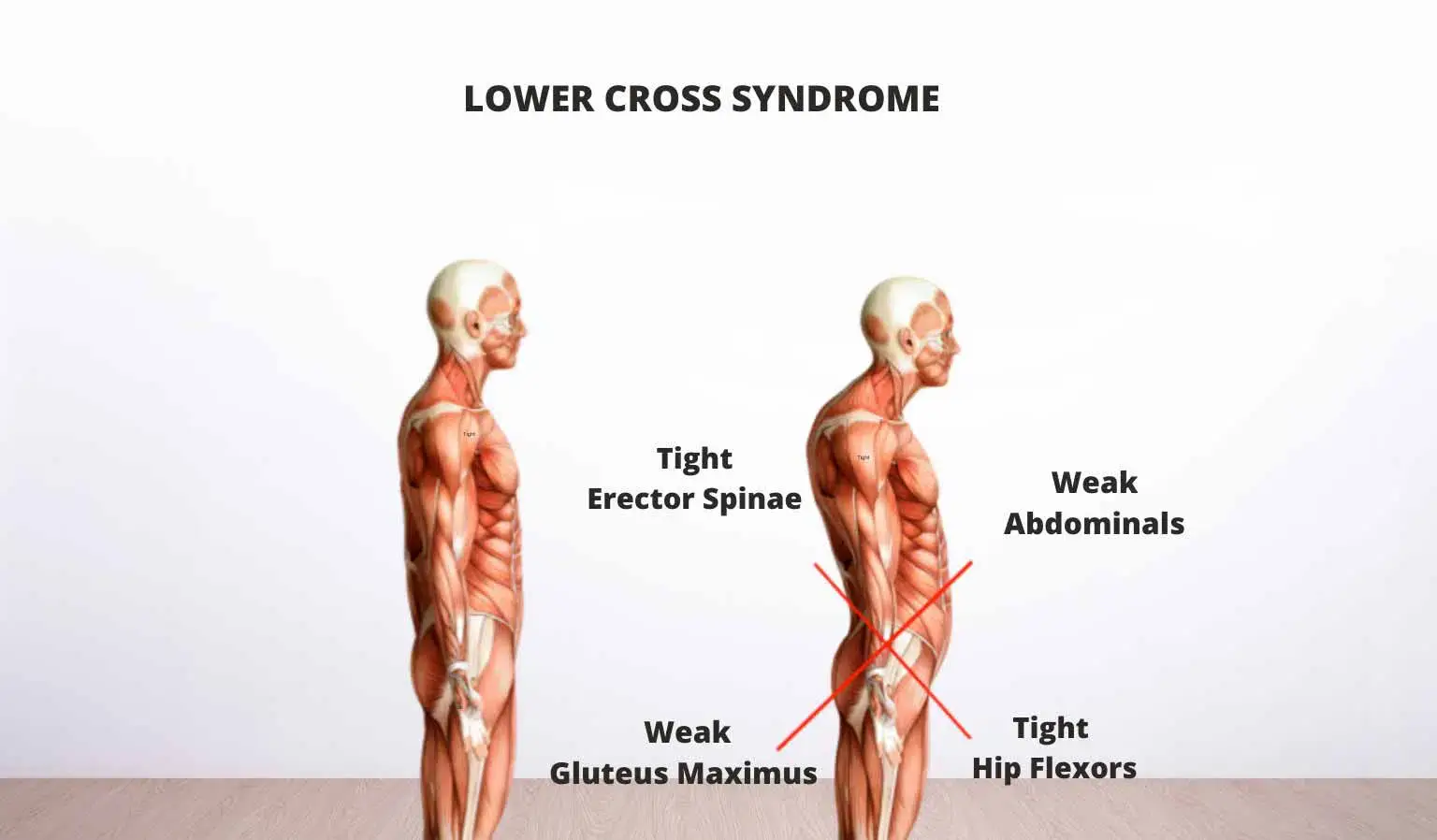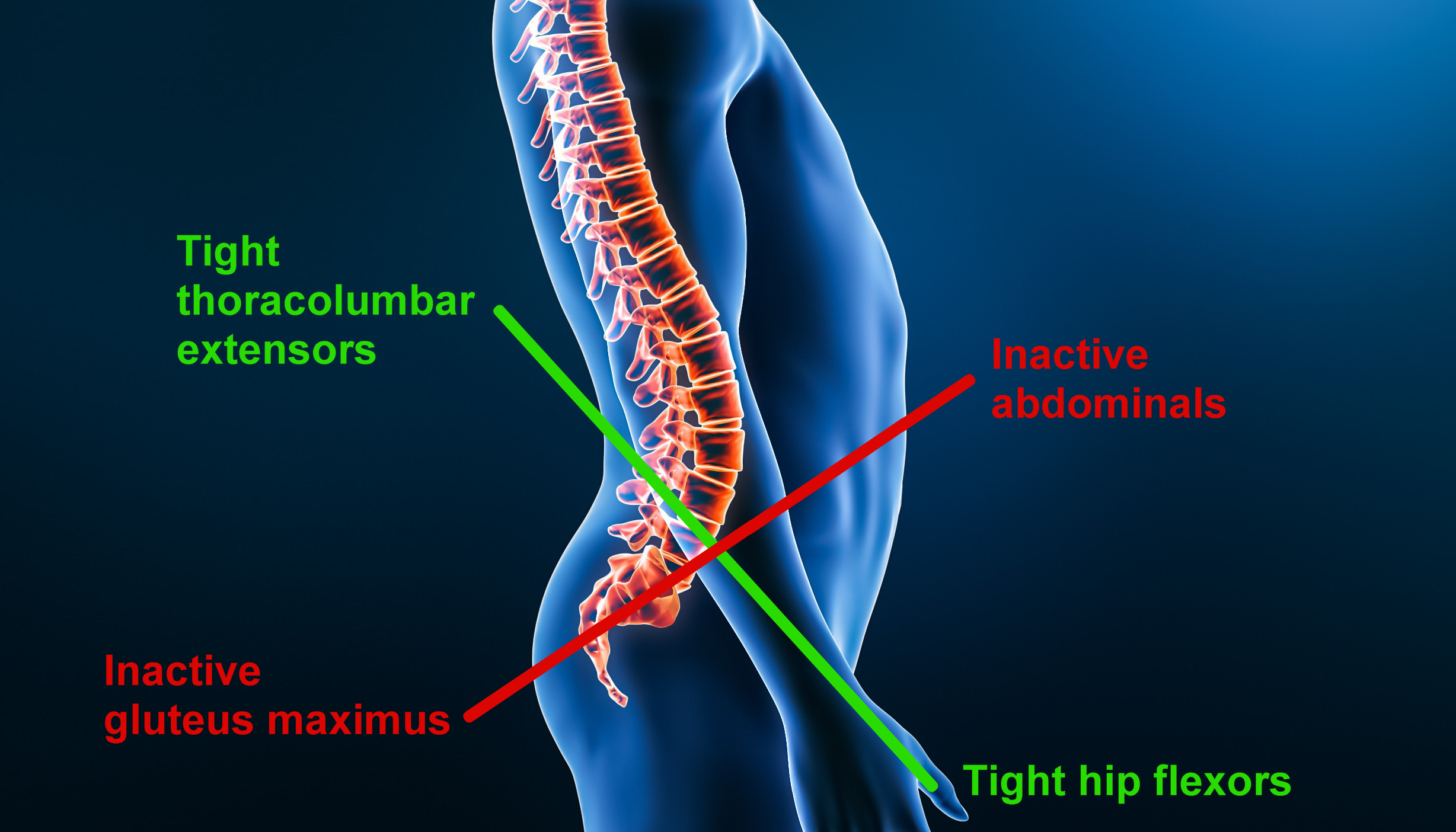Understanding What is Lower Cross Syndrome, its Causes, Symptoms, and Management
Table of Contents
Lower Cross Syndrome (LCS) is a musculoskeletal condition that affects the lower back, pelvis, and hip regions. It is characterized by a pattern of muscle imbalances and dysfunction, leading to postural changes and chronic pain.
This syndrome is prevalent in individuals who spend prolonged hours in a seated position, leading to weakened and tight muscles. In this article, we will explore the causes, symptoms, and management of Lower Cross Syndrome.

Causes:
1. Sedentary Lifestyle:
One of the primary contributors to Lower Cross Syndrome is a sedentary lifestyle. Prolonged sitting, whether at a desk, in a car, or in front of a computer, can lead to weakened muscles and imbalances in the hip and pelvic regions.
2. Muscle Imbalances:
Lower Cross Syndrome is characterized by specific patterns of muscle imbalances.
On one hand, there is tightness and overactivity in the hip flexors and lower back muscles, while on the other hand, there is weakness in the gluteal muscles and abdominal muscles.
This imbalance creates a cross-like pattern, hence the name “Lower Cross.”
3. Poor Posture:
Incorrect posture, especially while sitting, contributes significantly to the development of LCS.
Slouching or adopting a forward head posture can exacerbate muscle imbalances and increase strain on the lower back and hip muscles.
Symptoms:
1. Lower Back Pain:
Chronic lower back pain is a common symptom of Lower Cross Syndrome. The imbalance between tight hip flexors and weak gluteal muscles puts excessive stress on the lower back, leading to pain and discomfort.
2. Pelvic Tilt:
A noticeable anterior pelvic tilt is often seen in individuals with LCS.
This is characterized by the pelvis tilting forward, causing an exaggerated curvature in the lower spine.
3. Tight Hip Flexors:
Tightness in the hip flexor muscles, such as the iliopsoas, is a hallmark of LCS.
This tightness can contribute to restricted hip mobility and exacerbate lower back pain.
4. Weak Gluteal Muscles:
Weakness in the gluteal muscles, particularly the gluteus medius and maximus, is another common symptom.
This weakness compromises the stability of the pelvis and contributes to the development of LCS.
Management:
1. Stretching and Flexibility Exercises:
Regular stretching of tight muscles, especially the hip flexors and lower back muscles, is crucial in managing LCS.
Incorporating exercises like lunges, hip flexor stretches, and hamstring stretches can help improve flexibility.
2. Strengthening Exercises:
Targeted strengthening exercises for the gluteal muscles and core are essential in addressing muscle imbalances.
Exercises like squats, deadlifts, and glute bridges can help build strength in these areas.
3. Posture Correction:
Focusing on maintaining proper posture, both while sitting and standing, is key in preventing and managing LCS.
Ergonomic adjustments in the workplace can also play a significant role in improving posture.
4. Physical Therapy:
Individuals with severe cases of LCS may benefit from physical therapy.
A trained therapist can provide personalized exercises and interventions to address specific muscle imbalances and promote proper movement patterns.
5. Lifestyle Modifications:
Adopting a more active lifestyle and incorporating regular breaks from prolonged sitting can help prevent the development or progression of Lower Cross Syndrome.
Simple activities like walking or stretching throughout the day can make a significant difference.

Conclusion:
Lower Cross Syndrome is a prevalent condition in our modern, sedentary society.
Understanding the causes, recognizing the symptoms, and implementing appropriate management strategies are essential for individuals looking to alleviate pain, improve function, and prevent further complications.
By incorporating a holistic approach that includes stretching, strengthening, and postural awareness, individuals can take control of their musculoskeletal health and mitigate the impact of Lower Cross Syndrome on their daily lives.